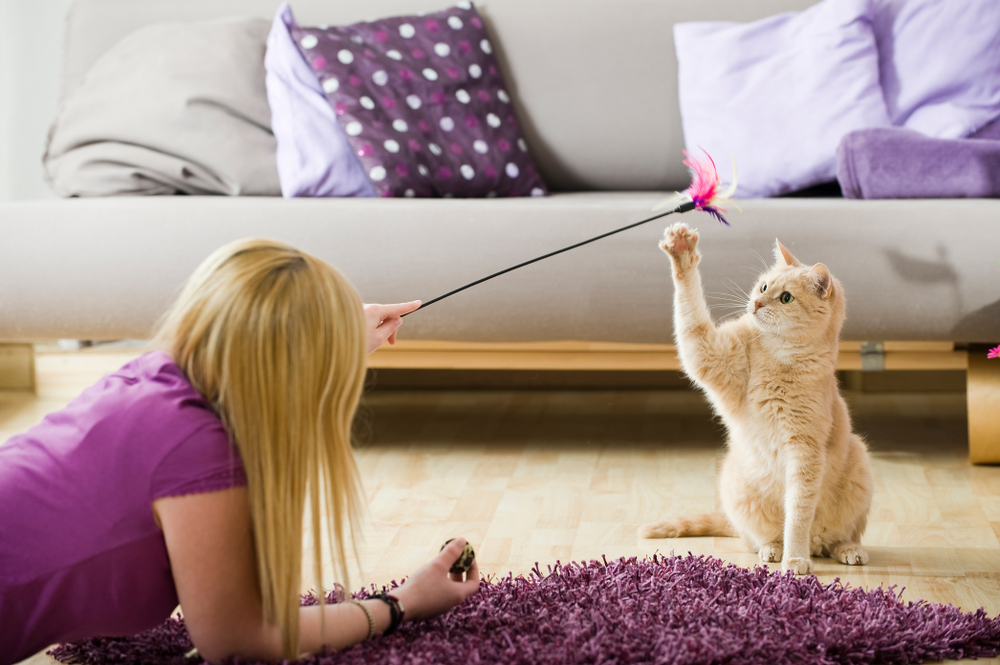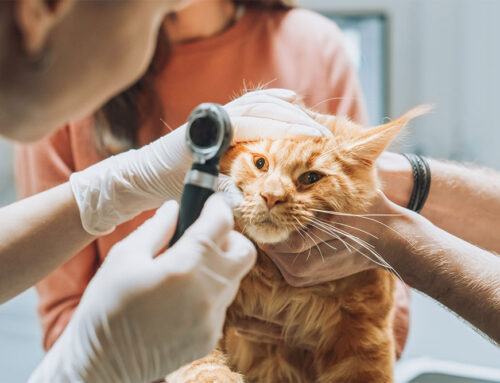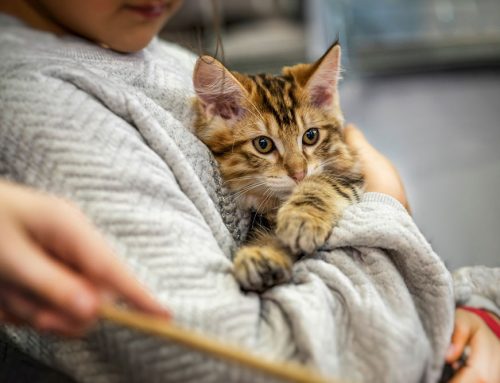A child who grows up with an animal often develops a special bond and lifelong friendship with their pet. Many pets endure children’s antics. Your pet may patiently comply with their favorite small human dressing them up and squeezing them tight with delight. However, some pets are unable to tolerate this loving attention. Therefore, to ensure your child and pet develop a successful—and safe—relationship, you will have to establish boundaries by which each must learn to abide. If you are a pet owner and parent or plan on becoming a parent, follow our Livingston Veterinary Hospital team’s tips to learn how to keep your kids safe around pets and vice versa.
Teach kids to respect pets
Teaching children to respect animals is an important pet ownership responsibility, and your child is never too young to start learning about the appropriate ways to interact with an animal. Children learn by example, so you must also model appropriate pet interaction behavior for them. Of course, your child’s age will influence the best way to facilitate these lessons. For younger children, imaginative play can be a great way to demonstrate acceptable child-pet interactions, and talk with your child about developing a safe and compassionate relationship with their animal friend. During initial respect-for-you-pet conversations with your child, include the following points:
- A pet is a living creature to be cared for and respected.
- Animals have needs and feelings, and they rely on us for love and care.
- A pet should never be provoked or teased.
- When petting an animal, reach out your hand with the palm facing up and gently move it toward a pet’s nose for sniffing. Never aggressively touch an animal’s eyes, ears, nose, or mouth.
- Always pet an animal gently, without pulling or tugging.
- Respect a pet’s need for space when they are eating, sleeping, chewing on a toy, or caring for their young.
- Ask an adult before approaching an animal you don’t know.
Supervise interactions between kids and pets

No matter how trustworthy your pet is, animals—and children—can be unpredictable, and you should always supervise their interactions. Never force an interaction between a child and a pet. If either seems uncomfortable or nervous, give them time to get comfortable, and let them approach each other on their own terms. This minimizes the injury risk for both the child and the pet. Young children may not be able to identify when a pet’s body language shows fear or stress, and you must supervise and stop the interaction if a pet appears uncomfortable. A pet’s stress signs can be subtle, and although they may not cower, growl or snap, they may still feel extremely uncomfortable, internalizing their negative emotions. Pets’ subtle stress signs include:
- Panting
- Wide or darting eyes
- Frequent yawning or scratching
- Hyperactivity
- Ignoring commands
Train and socialize pets
As with a child, a pet’s socialization is essential, starting from a young age. Pets are most able to process and accept new experiences between 3 and 14 weeks of age, and you must ensure that your four-legged friend encounters as many new situations and people—including children—as possible during this key socialization period, so they learn how to become a well-behaved and well-adjusted adult. In addition, follow these tips to help your pet become accustomed to being handled:
- Ears — Handle your pet’s ears to make ear cleaning sessions easier when they get older.
- Mouth — Look in your pet’s mouth and touch their teeth and tongue to prepare them for toothbrushing.
- Feet — Touch and hold your pet’s paws to accustom them to having their nails trimmed.
- Belly — Find your pet’s favorite itchy spot and rub their belly, so they learn to enjoy being touched in their abdominal area.
Create a safe environment for kids and pets
A safe home environment is essential for keeping kids safe around pets. Ensure that your pet has a designated space where they can rest, eat, and play in peace, and establish areas in the house that are only for your pet, so they have a calm place where they can retreat from rambunctious children when they feel the need to do so.
Pets and children make wonderful companions. To ensure their relationship is safe and positive, follow our tips. Always remind your child to treat their furry pal with respect and compassion. Model responsible pet ownership by scheduling your pet’s annual wellness exams with our Livingston Veterinary Animal Hospital team. If you have additional questions about guiding your child’s relationship with their four-legged friend or need to schedule your pet’s wellness exam, contact us.







Leave A Comment